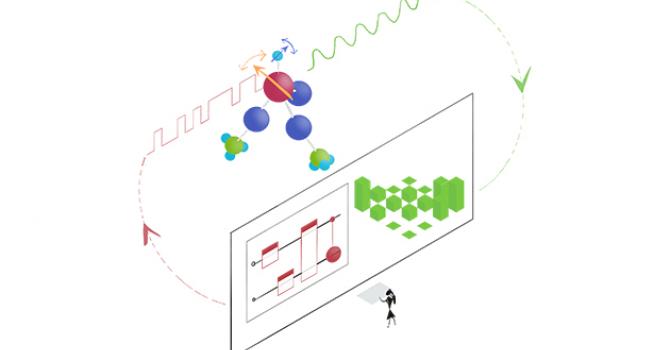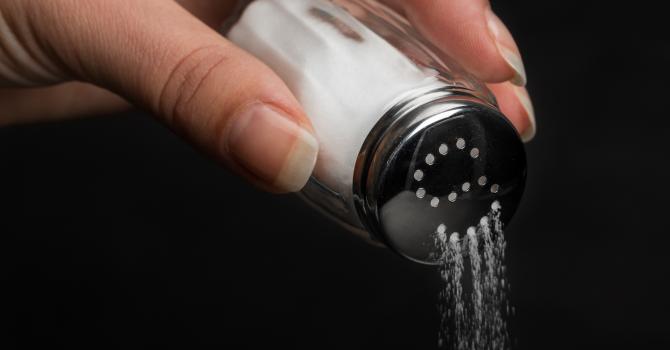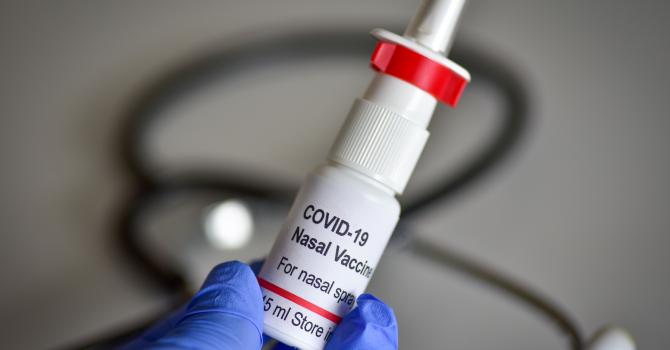The Age of Plastics
You're eating plastic in ways you don't even realize. Dr. Melody Leung, Division of Life Science, reveals how plastic is poisoning our planet.
By Dr. Melody Leung, Division of Life Science, HKUST
Videos of marine life intaking plastics have sent the internet into a frenzy recently. From pulling out plastic tubes off the noses of sea turtles, to finding a stomach full of plastic bags off a dead whale, hermit crabs living in plastic bottles and sea birds flying with plastic bags, these scenes are a warning of the dire risks presented by plastic consumption of mankind.
Surprisingly, it is not only sea lives who are taking in plastic as part of their diet. We humans are actually “eating” plastics as well daily—but many of us may not even know.
Plastics certainly occupy a center role in our daily life. From toys to home electric appliance, latex paint on walls and wooden furniture’s acrylic lacquer support, it is hard to think of our lives without plastics. They are light, water proof, easily moldable, come in both soft and hard, durable and elastic, and come in many forms—it is very easy to think of the wonders plastics can do.
But plastics give these wonders to us at a cost, with pollution easily becoming our biggest headache. Plastics do not degrade easily, and some of them may take 10,000 years or more to decay. The human race is running out of place to bury these plastics underground, and burning them in an incinerator will release poisonous gas such as Dioxin.
Some of the plastics we used are intentionally or unintentionally released into the ocean every day—and when they are exposed to sunshine, they break down into many small pieces, which can be as small as the size of a dinoflagellate. It is in this form that many marine life engulf them without knowing, these micro-plastics get into the food chain and eventually into our stomach.
In two studies conducted in 2017 and 2018 worldwide, Orb Media found that 83% of tap water and 90% of bottled water samples contain microplastics. Green Peace found micro-plastics in the waters around Antarctica, and some studies have also found that more than 90% of edible sea salt sold in supermarket contains microplastics. Polluted waters also mean polluted seafood. In 2014, scientists found microplastics from oyster and mussel samples, and in 2015, more plastics were found from fishes sold in markets in California and Indonesia. In 2016, scientists from Nanjing University discovered small microplastics (about 1/10 of the size of a dinoflagellate) would accumulate in fishes’ liver and lead to hepatitis. Scientists from Lund University in 2017 also found that nanoplastics (about 1/1000 of the size of a dinoflagellate) would accumulate in fishes’ brains and lead to brain damage and erratic behavior.
Cutting down usage of plastics have since become a priority for both the public and private sectors. For example, some come up with an idea to skip plastic strews, or replace them with paper or stainless steel ones; some coffee shops creatively replace strews with long macaroni or hollow biscuit tubes. Cosmetic brands have now begun to replace microplastics in their body scrub products with coffee grounds and sugar crystals, and some restaurants are offering discount to customers who bring their own reusable containers for take-outs, while charging extra for disposable plastic packaging. The Hong Kong government has also implemented plastic bag charging scheme, which has so far reduced the usage considerably.
On another day, a doctor friend and I discussed the possibility of buying food items in a wet market without using plastic bags completely. He dismissed the idea swiftly, pointing out that it would be impossible to bind items together. Plastics are light, durable, cheap, while their alternatives, such as glass boxes and cloth bags, are either too heavy or too troublesome to deploy and clean. So what can we do?
The way I see it is that we must do as much as we can. Just like many cannot switch to a vegetarian diet overnight, if Hong Kong can achieve a feat like Green Monday, we should consider ourselves triumphant.
To adapt to a new lifestyle will never be easy. But for now, let us think in our own creative ways on how we can all consume less plastics in our lives. Even little things like one less plastic strew or one less disposable spoon would count. What about buying our eggs in paper box instead of plastic? Or buying snacks in bulk to avoid individual packaging? How do we make our choices differently if we do not want the planet earth to take care of these plastic wastes? Can we limit our wastage by donation and recycling, and change our habit of relying on disposable utensils? It will be a long process but step by step, we can make a change. Let us start now.
Plastic bags were only wide adopted some 60 years ago. How do scientists come to the conclusion that they will take 500 years to degrade?
The majority of the plastic bags we use today are made of non-degradable polyethylene. This material is elastic, thin, and stable. As an organic polymer, polyethylene was discovered unintentionally by scientists Dr. R.O. Gibson and Dr. E.W. Fawcett in 1933. Dr. Karl Ziegler enhanced the polymerization process by using aluminium as a catalyst in 1953 and then invented high density polyethylene, or HDPE, in 1955, which won him the Nobel Prize in Chemistry in 1963 (Click here for more details). Compared to low-bearing capacity and transparent low density polyethylene bags, HDPE serves heavy duty and is mainly seen in wet markets and supermarkets in the form of a durable white tank-top shaped plastic bag.
Plastic bags were only wide adopted for some 60 years. How do scientists come to the conclusion that they will take 500 years to degrade? To measure organic matters’ speed of decomposition, scientists would usually conduct a series of respirometry tests. In these tests, researchers would bury plastic bags and other organic matters (such as newspapers and fruit peels) separately in microbe-rich soil, and compared the results with a control setup. Under stable temperature and humidity, microorganisms would assimilate the sample bit by bit and produce carbon dioxide; the resultant carbon dioxide levels serve as an indicator of degradation.
As the tests are usually conducted outdoors, climate and soil composition would affect the speed of decomposition, and hence there would be a slight difference in the data collected by different countries. In general, newspapers and peels would take around 6 weeks to reach total degradation. But for plastic bags, as microorganisms do not recognize them as food, stay intact throughout.
As a result, scientists use the term “500 years” to refer to something that would take “a really, really long time” to be decomposed. Some say that since plastics are not biodegradable, they should be put under the sun and undergo photolysis; while sun light can destroy the polymer’s structure and turn them into smaller pieces, they are really just “downsized” but not degraded; some would become so small that is no longer recognizable by the naked eye, and these tiny plastic bits have a high change of entering the bodies of animals and plants. While we do not know for sure yet how these tiny plastics would affect the living creatures, we must pay more attention to the potential danger of plastic pollutions poses to our society.
Today, some companies have released bio-degradable plastic bags and diapers, but since these plastic products are sensitive to temperature and humidity and their quality changes over time, the reception is rather lukewarm in Hong Kong. Reducing waste at source will still play the biggest role towards curbing plastic pollution, and adopting a greener lifestyle will hold the key to our next 500 years.






